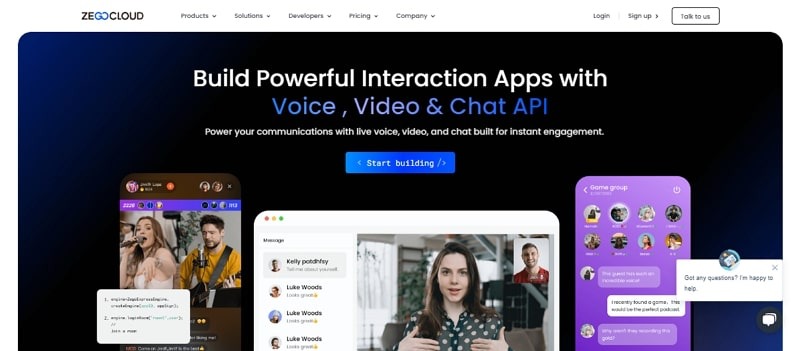An API, or Application Programming Interface, is a set of rules that allows different software applications to communicate with each other. It acts as an intermediary, enabling the integration of various services and facilitating data exchange without needing to understand the underlying code. APIs are essential for connecting applications, allowing them to share functionalities such as payment processing or data retrieval, ultimately enhancing user experiences through seamless interactions.
What is API Mean?
An API, or Application Programming Interface, is a set of rules and protocols that enables different software applications to communicate with each other. It acts as an intermediary, allowing applications to access and utilize the functionalities or data of other services without needing to understand their underlying code.
APIs can be categorized into various types, including open APIs (public), internal APIs (private), and partner APIs, each serving different purposes. They are widely used across numerous industries, enabling integrations that enhance user experiences, improve efficiencies, and drive innovation. For instance, APIs are critical in e-commerce for processing payments, in social media for sharing content, and in various software applications for accessing third-party services.
How Does an API Work?
The process of API work includes a request, one or more target application activities, and an API operation response. The flow is started by invoking the API operation, which may be done from mobile or online apps.
The process involves developers, the API, resources/assets, and finally, the end user:
- Developers access resources through a company’s API to create mobile or Web App
- The API provides access to the shared resources, allowing developers to connect their apps and their data;
- The resources such as data, software, and brands are leveraged by partners, developers, and third-party services that can use the API;
- End users use the apps and websites, which, through the API, can provide richer experiences by leveraging the data and services of other apps and sites.
This is how API generally works. However, different APIs have protocols, specifications, and operational mechanisms.

Types of API
APIs (Application Programming Interfaces) come in several types, each serving different purposes and functionalities. Here’s an overview of the most common types:
1. Open APIs (Public APIs)
Open APIs, also known as public APIs, are accessible to developers and third-party applications. They are designed to be widely used and often come with extensive documentation. Examples include the Twitter API and Google Maps API, which allow developers to integrate their functionalities into other applications.
2. Internal APIs (Private APIs)
Internal APIs are used within an organization and are not exposed to external users. They facilitate communication between different internal systems or services. This type of API helps improve efficiency by allowing different teams or departments to share data and functionality without exposing it to outside parties.
3. Partner APIs
Partner APIs are technically similar to open APIs but are intended for a specific purpose and audience. These APIs are shared with business partners and usually require registration or an agreement to access. For example, a hotel booking platform may provide a partner API to travel agencies to facilitate bookings.
4. Composite APIs
Composite APIs allow developers to access multiple endpoints in a single call. This type is particularly useful when fetching data from multiple sources or services in one request, reducing latency and improving performance. For instance, a composite API could retrieve user details and their order history in a single request.
5. RESTful APIs
RESTful APIs (Representational State Transfer) use HTTP requests to perform CRUD operations (Create, Read, Update, Delete) on resources. They are stateless and often return data in JSON or XML format, making them lightweight and easy to use in web applications. REST APIs are widely used due to their simplicity and scalability.
6. SOAP APIs
SOAP (Simple Object Access Protocol) APIs are protocol-based and rely on XML for messaging. They are more rigid compared to RESTful APIs, providing a higher level of security and reliability, which makes them suitable for enterprise-level applications. However, their complexity can make them less appealing for simpler applications.
Common Uses of APIs
APIs are the key to the success of many modern software systems. End users enjoy the benefits of APIs daily on many apps and websites. Let’s see now the most common and identifiable examples of current API use cases. Yet, many APIs created for commercial partners or internal use benefit the companies but are never widely adopted.
Login and authentication
In today’s highly networked software environments, login and authentication APIs provide some form of single sign-on. For example, one may urge users to “log in using Facebook.” Users no longer need to create a different account for each site or application, and the API involved efficiently integrates multiple application authentication behind the scenes.
Social media and messaging apps
APIs are used by social media platforms like Twitter and Facebook to manage communication between the platform and remote endpoints like Twitter bots.
Financial and payment transactions
A bank frequently uses an API to connect remote users to the bank’s backend systems for remote deposits, balance checks, transfers, and electronic payments. PayPal, for example, employs an API to connect a user to a PayPal account and even to make payments to third-party retailers such as Amazon and eBay.
Travel and booking
Consumers who look up airline schedules and buy tickets use the airline’s API, while those who look up hotel availability and book rooms use the hotel’s API. Some sites use proprietary APIs to allow clients to search for and book different flights and lodgings, while the travel site uses airline, hotel, car rental, and other provider APIs on the back end.
Content distribution and administration
Online content delivery platforms, such as Spotify and Netflix, use APIs to allow users to select desired content and then deliver that streaming content to the user’s device for viewing. At the same time, the provider retains control over the content, which is never actually downloaded or stored on the user’s device.
Shipping and supply chain management
The process of packing and delivering an item from the point of origin to the end of the destination generates a large amount of real-time data. APIs allow customers to verify the progress of a purchase and view any shipping data, such as the package’s current position and expected arrival date.
Widgets and services
APIs are typically utilized to implement many minor features and operations. For example, the weather report, ocean tide schedule, news feeds, and other information in a web search are frequently built by connecting to numerous service providers using the search engine’s APIs. APIs are used by certain services, such as Google Maps, to allow users to search for locations or plan routes via their web browser, and APIs also enable maps to be incorporated into a wide range of third-party websites.
Microservices
From the standpoint of software development, APIs are critical components of modern microservices-based systems, allowing communication among the multiple modules or containers developed to build the program. As a result, while one module can be edited, testing and updating are confined to that module or microservice.
These are only a few examples of typical applications. As the importance of software develops, API cases will continue to explore new use cases and play an increasing role in software development.

Why Do We Need an API?
Today, almost all economies are quickly transitioning digitally to compete and meet increasing customer demands. Telehealth, education, finance, and entertainment face the most radical technological advancements.
APIs assist businesses and organizations in digitizing, connecting, and innovating their products and services. A wide variety of APIs are used in today’s workplace, mobile, and online software, and they help to:
- Simplify and expedite their market entry tactics
- Improve client interactions
- Increase synergies between companies
- Increase operational agility and speed
- Create and seek new income, market, and distribution channels
- Manage large amounts of data and integrate data across multiple platforms
As a powerful and adaptable tool for connecting different software applications, APIs enable various unrelated software products to interact and communicate with other applications and data. Therefore, organizations get access to their data by making it publicly available.
Most API use cases involve merging data from different sources to create new goods and services, like our initial examples of flight websites and rental apps with integrated maps. This is possible via APIs that interface with many operating systems, such as iOS. This allows the organization to broaden its customer support reach while improving the user experience. Thanks to these APIs, end users access their app accounts, check their order history, and track and buy their products in seconds. We can get all this information in real time without contacting customer support.
APIs come in handy for businesses managing large amounts of data, enabling quick collection and analysis. This facilitates interaction by enhancing communication within a company and between firms.
To sum up, we need APIs because they enable interactions between applications and devices such as smart TV services, earphones, automobiles, etc. Therefore, the reason why we do need APIs is simply that they work.
Top 5 API Examples
1. Google Maps API
The Google Maps API integrates Google Maps with web applications to create dynamic maps. It allows developers to add custom markers and generate route directions. This API enhances location-based functionality in apps, enabling users to explore maps, find places, and visualize geographic data on their websites. It’s essential for applications that rely on mapping, such as delivery services, travel planning websites, and real estate platforms.
2. Twitter API
The Twitter API lets applications interact with many aspects of Twitter. This includes sending tweets, reading timelines, and accessing user profiles. Developers can integrate Twitter functionality into their web applications. This enables users to engage with social content directly from the app. For instance, a news website might use this API to display recent tweets about a topic or allow users to tweet content directly from the site, enhancing social sharing.
3. Stripe API
The Stripe API offers tools for handling online payments and transactions, supporting various payment options like credit cards and Bitcoin. Its security features and intuitive interface make it easy to integrate payment processing into e-commerce sites or mobile apps. Users can make secure purchases simply. The API is great for managing subscriptions, splitting payments, issuing refunds, and simplifying financial operations for online marketplaces.
4. OpenWeatherMap API
The OpenWeatherMap API provides comprehensive weather data, including current conditions, forecasts, and historical information. Developers can integrate this data into their applications for various uses. These include weather forecasting tools, travel planning apps, agricultural platforms, and climate research software. By using this API, developers give users up-to-date weather information, enhancing the user experience and supporting informed decisions based on weather data.
5. Spotify Web API
The Spotify Web API lets developers integrate Spotify services like music search, playlist management, and playback control into their applications. This transforms how users interact with music in their apps. They can search for tracks, manage playlists, and control music playback within a web interface. This integration is perfect for creating personalized music experiences, developing entertainment platforms, or adding background music to multimedia content.
APIs Powering ZEGOCLOUD’s Real-Time Communication Solutions
APIs play a crucial role in enabling real-time communication solutions of ZEGOCLOUD. By providing a structured way for different software systems to interact, APIs facilitate the seamless integration of audio and video services, messaging, and other communication features into various applications.

Key Benefits of Using APIs in ZEGOCLOUD:
- Security: ZEGOCLOUD employs secure API practices to protect user data during transmission. This includes authentication mechanisms and encryption, ensuring that communication remains safe and private.
- Enhanced Flexibility: APIs allow developers to integrate ZEGOCLOUD’s features into their own applications easily. This flexibility enables businesses to customize their communication solutions to meet specific needs without building everything from scratch.
- Real-Time Capabilities: ZEGOCLOUD’s APIs are designed to handle real-time communication effectively. This ensures low latency and high-quality audio and video experiences, which are essential for applications like video conferencing and live streaming.
- Scalability: APIs enable ZEGOCLOUD to scale its services efficiently. As user demands increase, the API architecture allows for rapid adjustments and enhancements without disrupting existing services.
- Interoperability: By leveraging APIs, ZEGOCLOUD can work seamlessly with other software platforms and services, such as customer relationship management (CRM) systems and e-commerce solutions. This interoperability enhances the overall user experience by integrating various functionalities into a single platform.
Conclusion
In summary, an API (Application Programming Interface) is essential for enabling communication between software applications. It provides standardized protocols for data exchange, allowing developers to integrate functionalities and enhance user experiences. APIs are crucial across various industries, such as technology, finance, and healthcare, promoting scalability and innovation. As the demand for interconnected services grows, APIs will continue to play a vital role in the development and operation of modern software solutions.
Read more:
FAQ
Q1: Who works with APIs?
APIs are primarily utilized by software developers, system architects, and product managers. Developers are responsible for creating and integrating APIs into applications, while system architects design the systems that leverage these APIs. Product managers ensure that the features and functionalities of the API align with the overall business goals and user needs.
Q2: Which industries use APIs?
APIs are utilized across various industries. In technology, they enable application integrations. Finance uses APIs for secure transactions. In e-commerce, they manage inventory and payments. Healthcare employs APIs for sharing patient data, and telecommunications enhances services like messaging and VoIP through APIs. Overall, APIs are essential for integration and innovation in these sectors.
Q3: What are the first steps in creating an API?
The first step is to define the purpose and requirements of your API, determining what functionalities it will offer. Next, choose the right technology stack, which includes selecting a programming language and framework suitable for your project.
Let’s Build APP Together
Start building with real-time video, voice & chat SDK for apps today!










